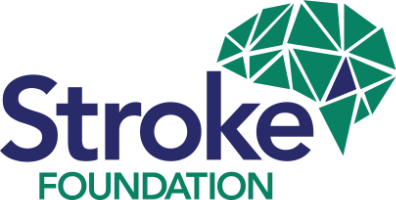Australia’s Second Stroke Ambulance Launched with Advanced Technology in Melbourne

Stroke Foundation was delighted to join partners and Victoria’s Health Minister the Hon. Mary-Anne Thomas at the launch of Australia’s second Mobile Stroke Unit (MSU) or stroke ambulance based out of the Royal Melbourne Hospital (RMH) in December 2024.
The stroke ambulance features cutting-edge technology including a virtual neurologist (based at the RMH), advanced CT brain scanner and carries a full range of stroke treatment medications. The new unit also offers a larger space than the original stroke ambulance (introduced in 2017) enhancing its capacity to deliver rapid and life-saving stroke care.
Every minute counts when stroke happens, so the new stroke ambulances offer a game-changing advancement in treating stroke and improving survival and recovery outcomes for stroke patients.
Given this, Stroke Foundation has been a founding partner and donor to this vital initiative, thanks to the generous contributions of those who have donated to the cause.
Stroke ambulances are custom-built, specialist vehicles and clinical team that allow stroke patients to receive hospital-grade assessment and treatment in the field, rather than waiting to arrive at a hospital. To date, more than 10,000 people have been treated by the service since its inception seven years ago.
The Mobile Stroke Unit initiative is a collaboration between Ambulance Victoria, The Royal Melbourne Hospital (RMH), Florey Institute of Neuroscience and Mental Health, Stroke Foundation, The RMH Neuroscience Foundation, the Victorian Government, and the National Health and Medical Research Council. Each MSU is staffed with two paramedics, including a Mobile Intensive Care paramedic (MICA), a CT radiographer and stroke nurse specialist.
Stroke Foundation’s target to raise $100,000 to contribute towards the cost of the new CT scanner in the second MSU was achieved.
Some of the achievements of the first MSU include:
- 10,825 total dispatches (between Nov 2017 and Sep 2024)
- Around 20% of patients were treated in the first 60 minutes (golden hour) but even more impressive, 50% within 90 minutes of stroke onset (silver hour)
- 37% of attended patients received a CT scan
- 1 in 4 ischaemic stroke patients were recommended for Endovascular Clot Retrieval (ECR)
- 1 in 2 patients with confirmed haemorrhagic stroke were referred for neurosurgery
Currently, the first MSU operates within a 20km radius of the RMH. The second service will be based in the southeast near Dandenong (in Victoria), with Monash Health as the primary receival site.
A person suffers a stroke every 11 minutes in Australia. Stroke is one of Australia’s biggest killers and a leading cause of disability.
With stroke, every minute counts, and the sooner paramedics arrive, and treatment begins, the better one’s chance of surviving and maintaining a good quality of life.
F.A.S.T. signs of stroke account for 80 percent of stroke symptoms:
- F - Check their FACE. Has their mouth drooped?
- A - Can they lift both ARMS?
- S - Is their SPEECH slurred? Do they understand you?
- T - TIME is critical.
If you see any of these signs, call 000 immediately.
